Hardaway (Archaic)
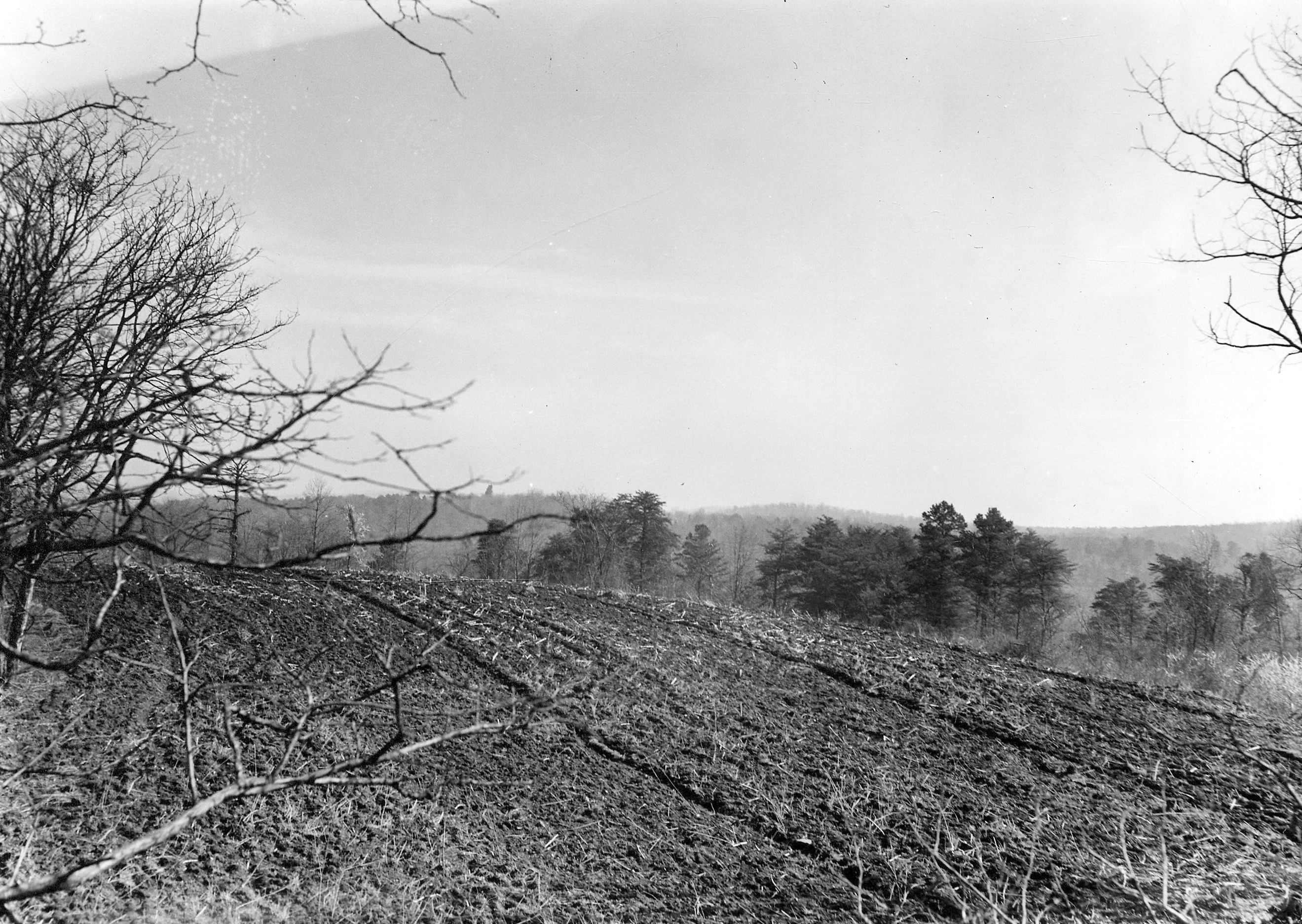
The Hardaway site (31ST4) is probably the most recognizable site name in North Carolina and represents the oldest excavated site in the state. Located in Stanly County, just outside the town of Badin, Hardaway is situated in the Uwharrie mountains, above the Yadkin River on the flat top of a ridge that forms the west side of “the Narrows” gorge. The name of the site comes from the Hardaway Construction Company of Columbus, Georgia. In 1917 the company completed the dam that blocks the Yadkin at the Narrows and holds back the waters of Badin Lake. The site was first reported to professional archaeologists by Herbert M. Doerschuk, an electrical engineer for the Carolina Aluminum Company. Doerschuk was an avid collector and one of the original members and officers of the Archaeological Society of North Carolina. He first showed the site to Joffre Coe in 1937; in April of 1938 Coe asked Doerschuk to write up a brief description of the site and some of its artifacts for the first edition of the Society’s newsletter. Coe was particularly interested in the engraved slate pieces that are unique to Hardaway. The Hardaway site also stands out as the beginning of random sampling in archaeology. A letter from Coe to Doerschuck asks him to take an unselected group of about 100 projectile points, pick out various shapes, make outline drawings of them, and note the distribution or number of times each shape occurred.
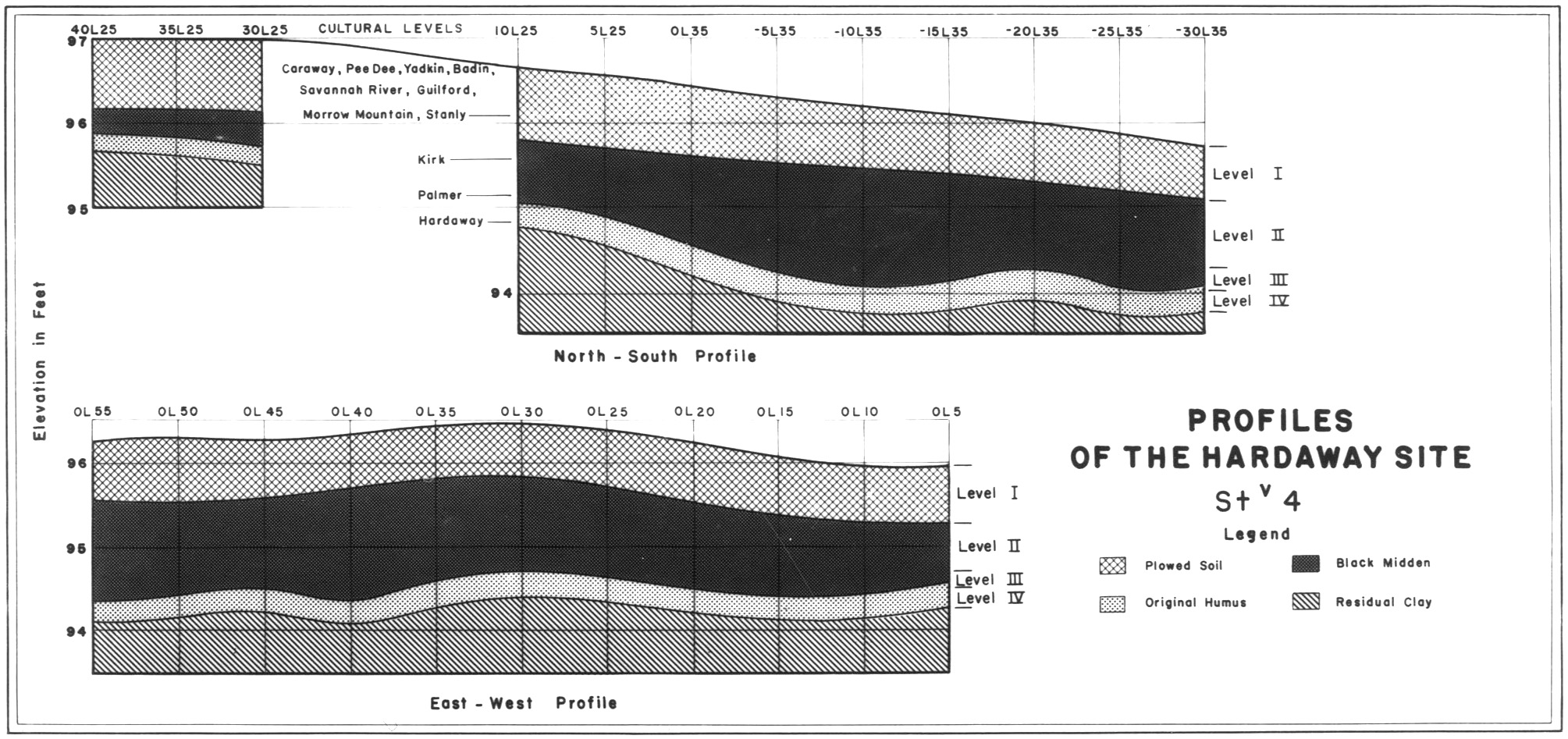
The artifacts found at Hardaway indicate that it was occupied by Indians as far back as the Paleoindian period (about 9,500 – 7,500 B.C.). However, there are no radiocarbon dates from the site, so there is some disagreement about its exact age and whether the earliest site occupation should be classified as Paleoindian or Archaic. Some think that the Hardaway complex found at the site is as early as Clovis (10,000 – 9,000 B.C.), while others prefer to put Hardaway within the Early Archaic period or Late Paleoindian-Early Archaic Transitional Period. Regardless, part of the site’s claim to fame is that it was one of three sites (Doerschuk and Lowder’s Ferry were the other two) that allowed Coe to link together an unbroken chain of prehistoric site occupations from about 10,000 to 2,500 years ago (roughly 8,000 B.C. to 500 B.C.) and which his doctoral dissertation at the University of Michigan was based on. The Hardaway site remains a standard for identification of spear points used in the periods before settled village life and manufacture of pottery.
History of Excavations
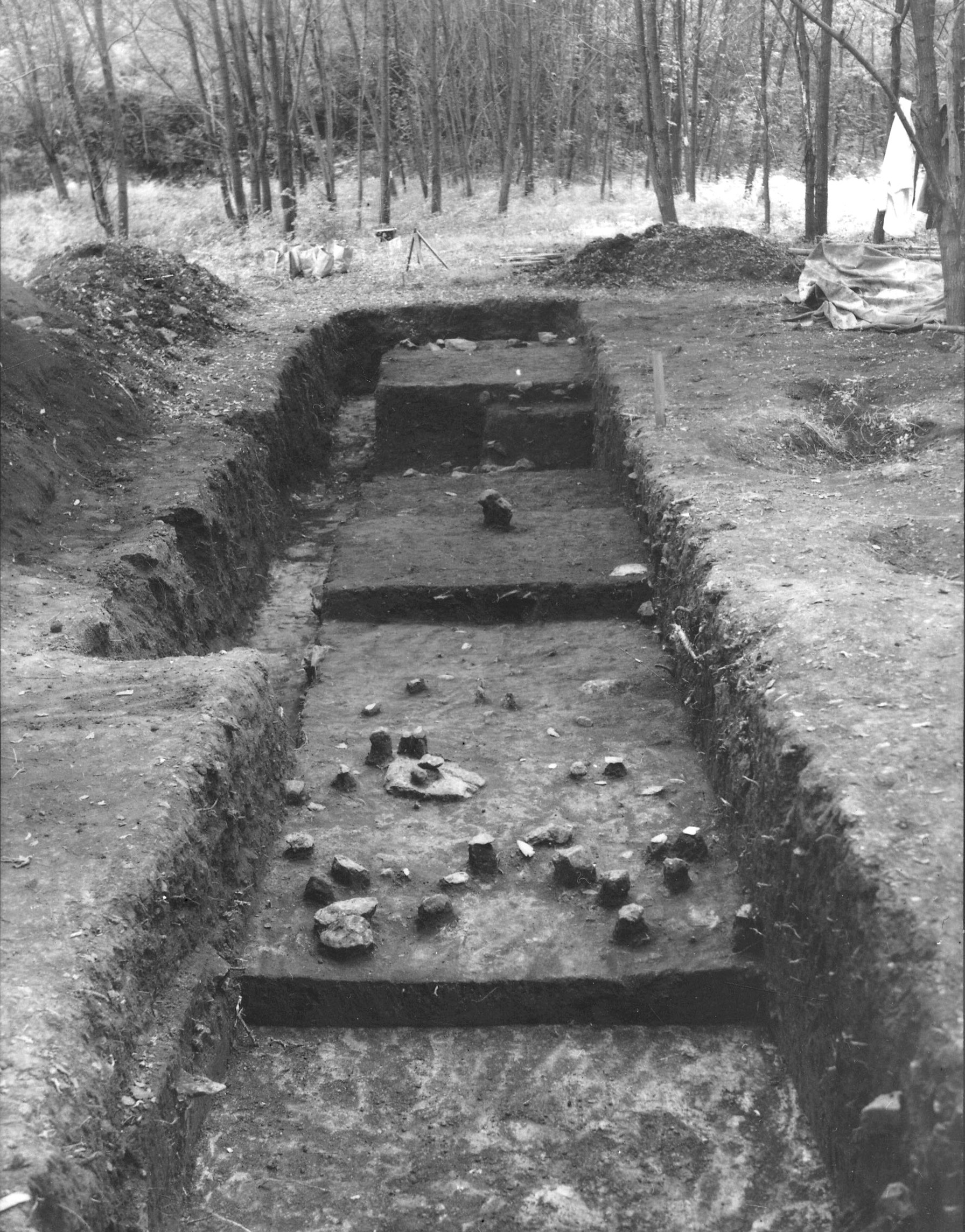
The first formal excavations took place at Hardaway in 1948, following World War II. Joffre Coe, Paul Strieff (a Michigan graduate student working at Morrow Mountain State Park), and Herbert Doerschuk excavated a 5ft-by-5ft unit at the site. Unfortunately, they encountered a Woodland burial at the base of the plowed soil, which required all the time they had scheduled at the site. In 1951 the next isolated 5ft-by-5ft unit was excavated, but it was not until 1955 that work began in earnest. During these excavations, soil was excavated in arbitrary 6-inch levels, creating arbitrary results. Large numbers of projectile point types were found in all levels but with this excavation technique it seemed like there was no apparent vertical separation. In 1958 Coe changed excavation strategies and tried to distinguish natural soil zones. The soil zones were then used to maintain vertical control. The success of this approach allowed Coe to divide the cultural sequence at Hardaway into three distinct chronological phases based on vertically separated spear-point forms (Kirk, Palmer, and Hardaway). The results of the Hardaway excavations were published in Coe’s revised doctoral dissertation, titled The Formative Cultures of the Carolina Piedmont. The book was purchased by professional archaeologists and amateur collectors alike. Not only did the collectors use the book to identify specimens in their collections, but many of them also used the book’s maps to locate important archaeological sites, which they proceeded to loot. This led to pot hunters from all around the South traveling to North Carolina to dig at Hardaway and surrounding sites.
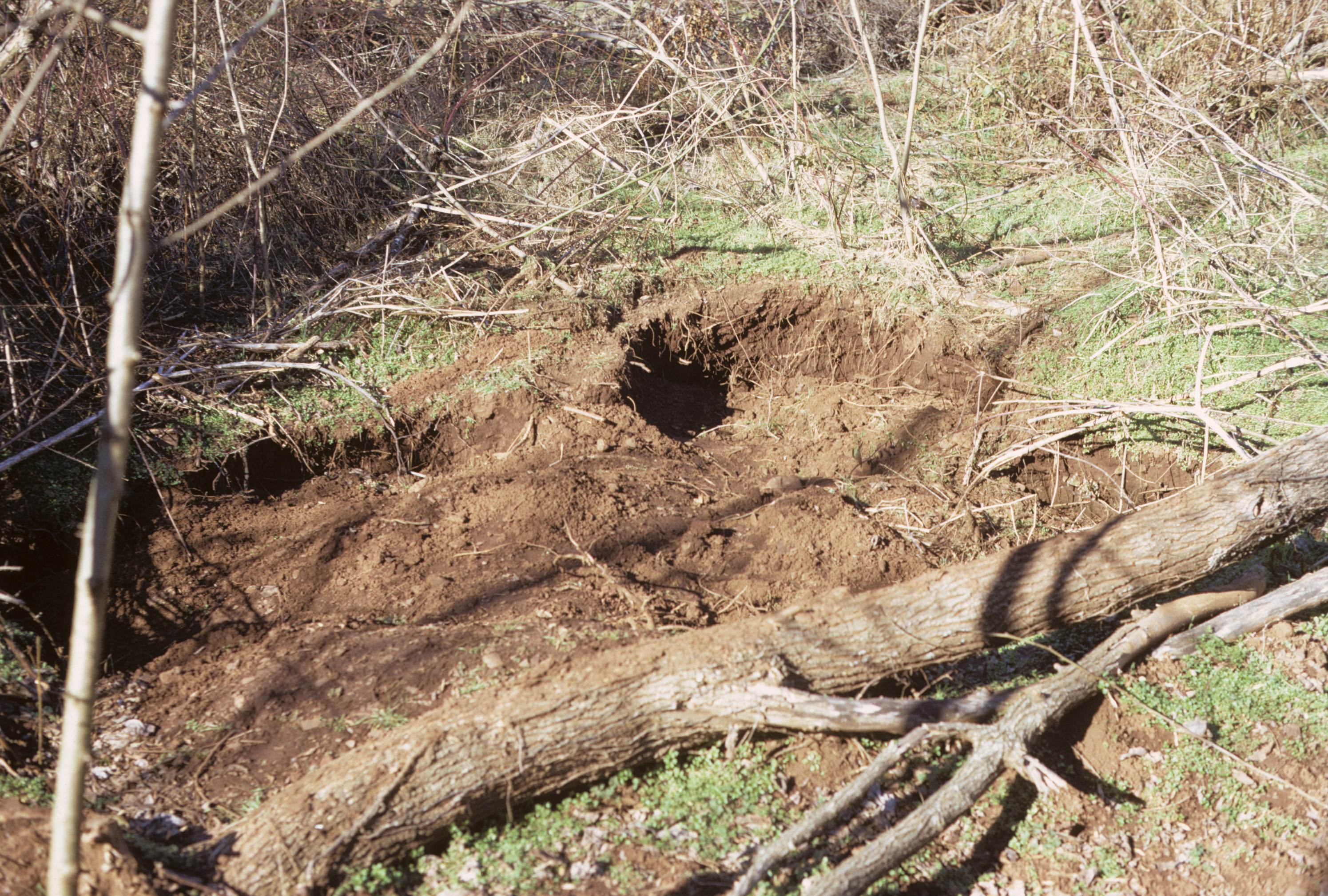
The large numbers of looters coming to the site created problems for the excavations, which up until this point had all been done with very little funding. In fact, in the 1950s Stanley South and David Phelps brought crews working on the nearby Town Creek site over to Hardaway as time permitted. The excavation strategy involved small crews that opened enough trenches to gain an understanding of the stratigraphy. The trenches formed a border around what was considered to be the heart of the site, an area that was to be saved until adequate funding could be obtained to excavate it properly. Of course, leaving the heart of the site intact for later investigation also meant that it was the area targeted by pothunters after publication of Coe’s dissertation in 1964. The University of North Carolina held the lease on the property from 1954 until the early 1980s, and staff and graduate students spent long weekends attempting to guard the site and chasing away pot hunters. Unfortunately, they could only do so much against the constant destruction. By 1972, when Trawick Ward and Steve Davis first visited Hardaway to put up more “keep out” signs, it looked like a heavy artillery impact zone. The entire site was covered by huge crater-like holes from the original area of excavations to the tip of Hardaway Point at the water’s edge. Those caught in the act of looting claimed that Coe had done all he was ever going to do at the site, so they should be allowed to dig now that he was finished.
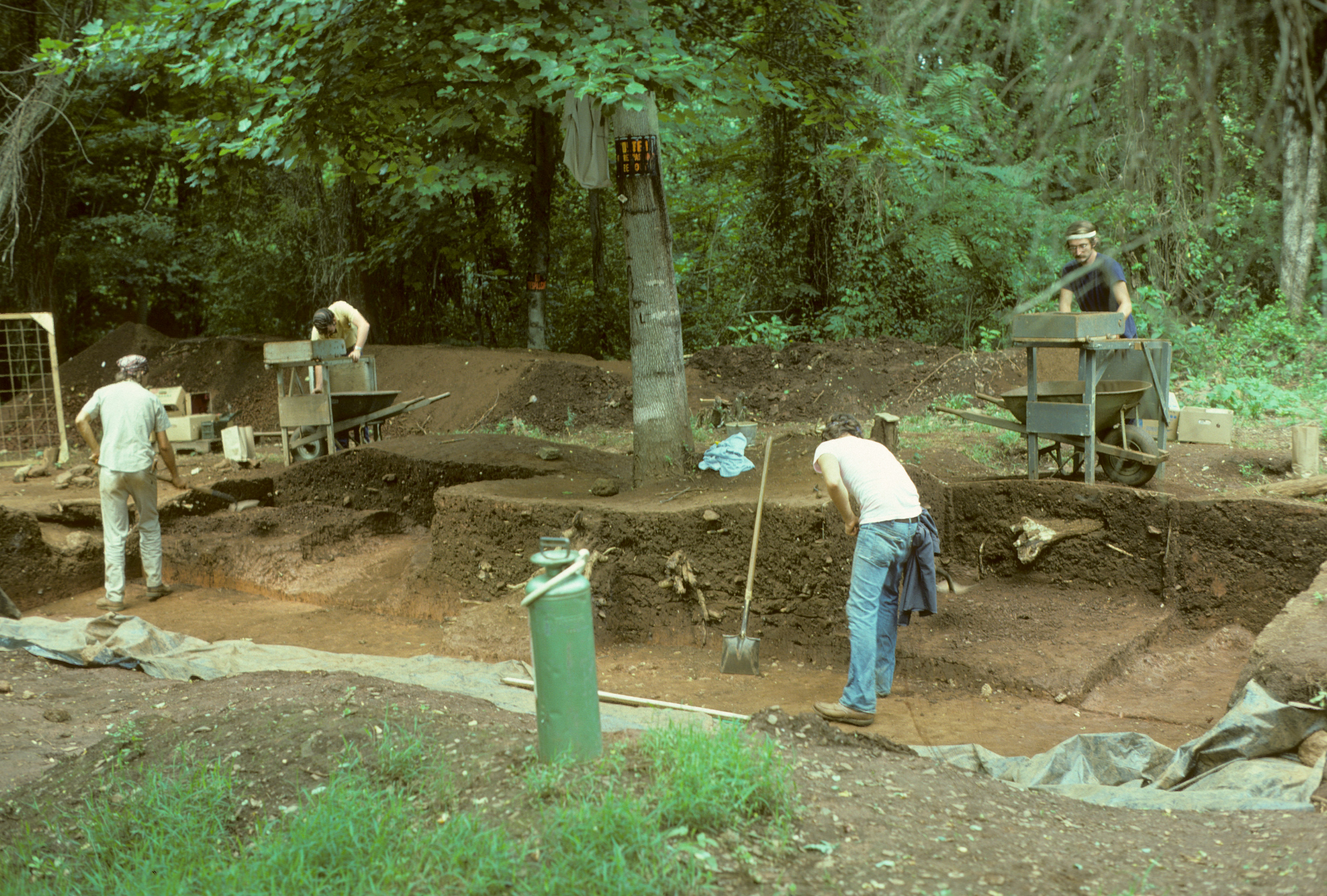
Coe was not done at the site, though, and in 1975 excavations resumed. The hope was that portions of the more deeply buried Hardaway and Palmer zones might have escaped looters, who had begun to dig into one another’s backfill. This phase of excavations continued every summer through 1980. Regrettably, the anticipated large patches of undisturbed Hardaway and Palmer zones were never found. Although stratified deposits were not as well preserved as had been hoped, the excavations between 1975 and 1980 still recovered tons of stone tools and chipping debris. During earlier excavations, most flakes and other nondiagnostic specimens were discarded in the field, so the new collections had the potential to answer important questions about prehistoric stone-tool manufacture.
Research Questions
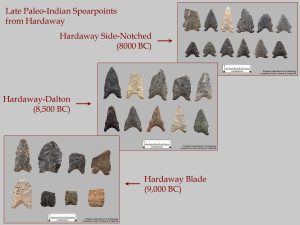
One of the most enigmatic research questions involving the Hardaway site is exactly what the Hardaway and Hardaway-Dalton lithic (stone) complexes represent. Option A is that the complexes are indicative of the Early Archaic period (8,000 B.C. to 6,000 B.C.) in North Carolina. Proof for this comes in a few different forms. First, radiocarbon dates on Dalton points from the Midwest range from 8,500 B.C. to 7,900 B.C. Second, Hardaway-Dalton points are more widespread and made from a greater variety of raw material than the earlier Clovis and Folsom spear points. The geographic spread and variety of raw materials are argued to be more typical of Early Archaic than Paleoindian assemblages.
Option B is that the Hardaway and Hardaway-Dalton complexes are indicative of the Paleoindian period (9,500 to 7,500 B.C.). Joffre Coe viewed the variety of projectile points that form the Hardaway complex (i.e., Hardaway Blade, Hardaway-Dalton, Hardaway Side-Notched) as representing differences over time. Other archaeologists think that projectile points likely represent different stages of tool modification resulting from use and resharpening, or perhaps geographic differences. Regardless, everyone who believes in Option B agrees that the other stone tools associated with the Hardaway complex are similar to those used by Paleoindians. In particular, the unifacial end scrapers and side scrapers found at Hardaway are identical to those found on other Paleoindian sites.
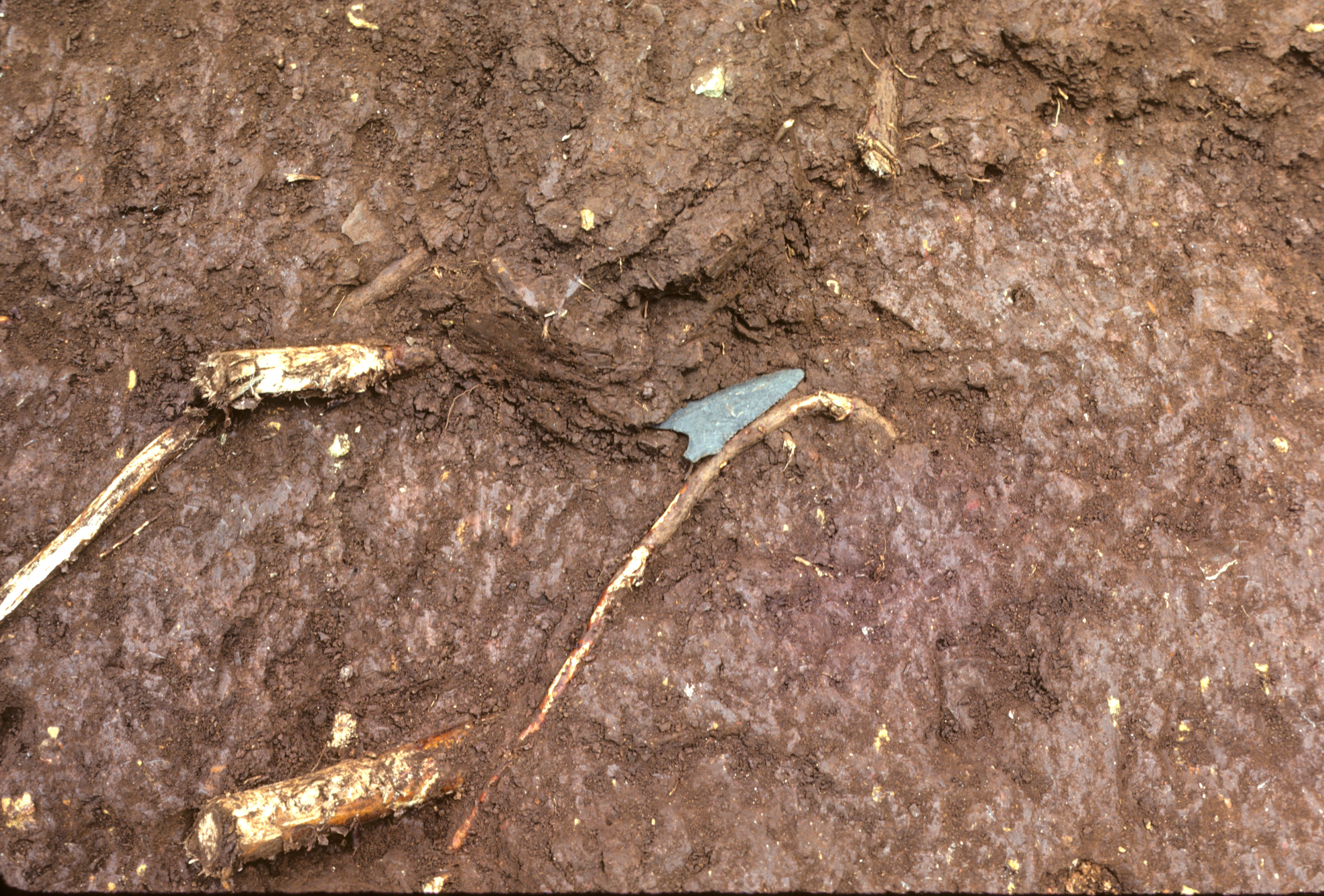
If Coe is correct in thinking that the variety of Hardaway spear points reflects an evolution of types through time, then the earliest type (Hardaway Blade) could be as early as Clovis in the East. Unfortunately, it is unclear from the stratigraphy at the site if this is the case. Randy Daniels, who re-examined much of the Hardaway material originally excavated in the 1950s, as well as many of the artifacts from the final phase of excavations, found that more Hardaway-Daltons than Hardaway Blades occurred in the lowest zone at Hardaway. This vertical distribution suggests that Hardaway Blades are more likely to represent preforms or unfinished Hardaway-Dalton points (supporting ideas about stages in tool modifications) than their own separate point type.
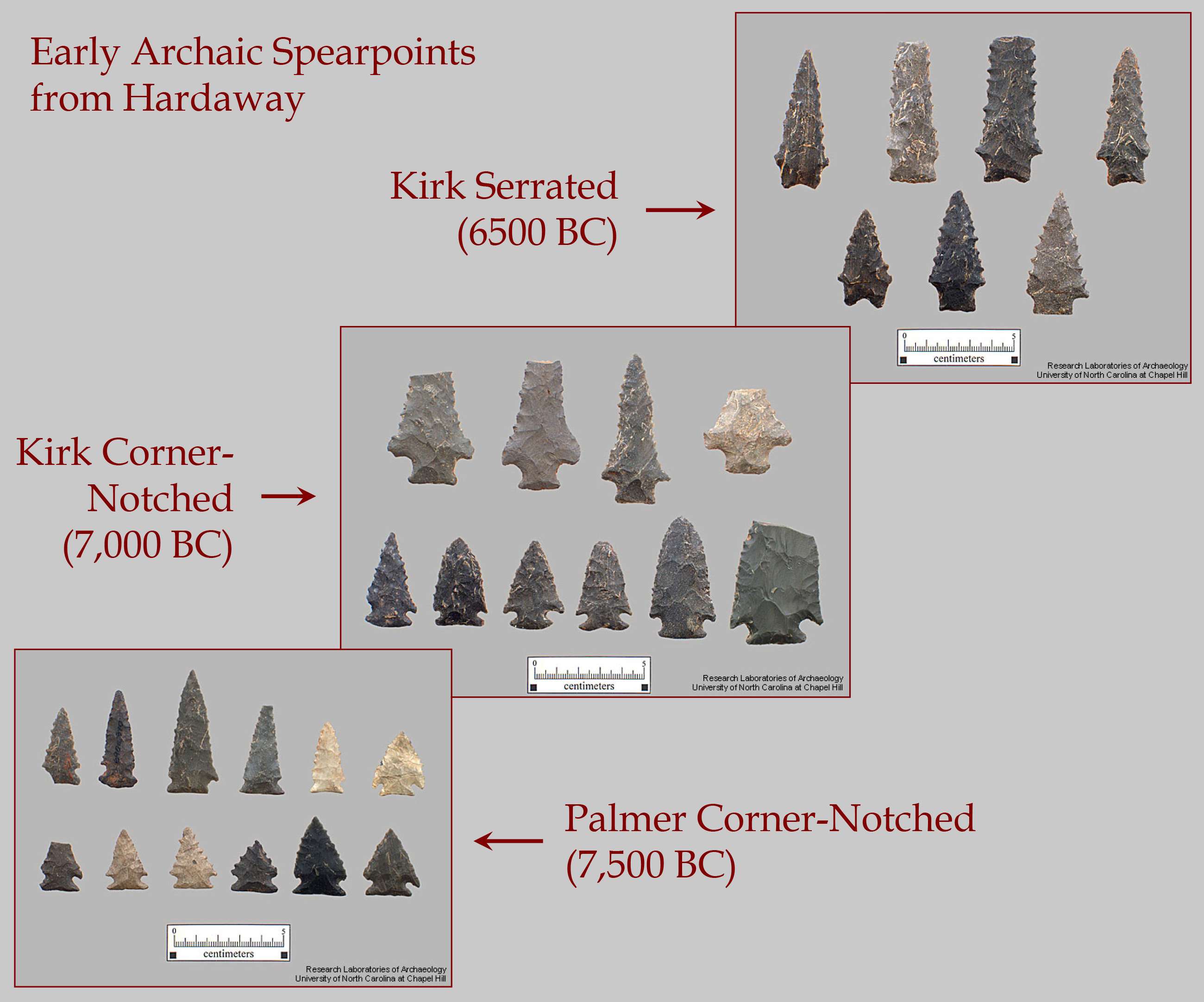
Critiques of Option B, that the complexes are indicative of the Paleoindian period, rely primarily on the amount of time for the complex to have developed. Albert Goodyear (1982) suggested a range of 8,500 to 7,900 B.C. for the Hardaway-Dalton complex. Most archaeologists consider this an extremely short amount of time for an assemblage as varied as Hardaway to develop. Additionally, the wide range of stone tools was even added to by Daniel’s analysis when he identified another type of point in the assemblage – the Small Dalton.
Thus far in the history of North Carolina archaeology, there are only two other sites that help contribute to this debate. In the late 1970s, Steve Claggett and John Cable excavated at sites 31Ch29 and 31Ch8, located on the east side of the Haw River in Chatham County; today, both sites lie beneath B. Everett Jordan Lake. Their large-scale block excavations revealed a stratified sequence of artifacts that generally confirmed the chronology and typology that Coe published in 1964 and which had been refined by researchers in other states. Unfortunately, no organic material was recovered that could be radiocarbon dated. Ultimately, the only way the debate about what the Hardaway and Hardaway-Dalton complexes represent will be decided is if other intact stratified sites are discovered that can be dated using radiometric techniques.
Sources
Coe, Joffre L.
1964 • The Formative Cultures of the Carolina Piedmont. Transactions of the American Philosophical Society, n.s., 54, pt. 5, Philadelphia.
Daniel, I. Randolph, Jr.
1994 • Hardaway Revisited: Early Archaic Settlement in the Southeast. University of Alabama Press, Tuscaloosa.
Ward, Trawick H., and R.P. Stephen Davis, Jr.
1999 • Time Before History: The Archaeology of North Carolina. University of North Carolina Press, Chapel Hill.
